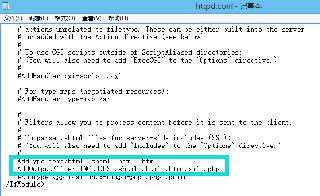基于js實(shí)現(xiàn)數(shù)組相鄰元素上移下移
實(shí)現(xiàn)效果:

即需要實(shí)現(xiàn)當(dāng)前元素與相鄰元素交換位置,
當(dāng)上移時(shí),則是當(dāng)前元素與上一元素調(diào)換位置;當(dāng)下移時(shí),則是當(dāng)前元素與下一元素調(diào)換位置。
實(shí)現(xiàn)代碼:
js:
//點(diǎn)擊上移clickUp(index){ this.swapArray(this.tableData, index-1, index);},//點(diǎn)擊下移clickDown(index){ this.swapArray(this.tableData, index, index+1);},//數(shù)組元素互換位置swapArray(arr, index1, index2) { arr[index1] = arr.splice(index2, 1, arr[index1])[0]; return arr;},
html:
<el-table-column label='順序調(diào)整' min- align='center'> <template slot-scope='scope'> <div class='img_style'> <img src='http://www.hdgsjgj.cn/bcjs/@/assets/images/up_01.png' v-if='scope.$index == 0'> <img src='http://www.hdgsjgj.cn/bcjs/@/assets/images/up.png' @click='clickUp(scope.$index)' v-else> <img src='http://www.hdgsjgj.cn/bcjs/@/assets/images/down_01.png' v-if='scope.$index == tableData.length - 1'> <img src='http://www.hdgsjgj.cn/bcjs/@/assets/images/down.png' @click='clickDown(scope.$index)' v-else> </div> </template></el-table-column>
注意:
1.思想就是在數(shù)組中交換兩個(gè)元素的位置,使用splice()的替換;
2.上移是跟上一元素交換位置,下移是跟下一元素交換位置,不同體現(xiàn)在調(diào)用調(diào)換方法時(shí)傳入的index參數(shù)不同。
以上就是本文的全部?jī)?nèi)容,希望對(duì)大家的學(xué)習(xí)有所幫助,也希望大家多多支持好吧啦網(wǎng)。
相關(guān)文章:
1. 使用Hangfire+.NET 6實(shí)現(xiàn)定時(shí)任務(wù)管理(推薦)2. Xml簡(jiǎn)介_動(dòng)力節(jié)點(diǎn)Java學(xué)院整理3. 如何在jsp界面中插入圖片4. jsp實(shí)現(xiàn)登錄驗(yàn)證的過濾器5. phpstudy apache開啟ssi使用詳解6. xml中的空格之完全解說7. JSP之表單提交get和post的區(qū)別詳解及實(shí)例8. jsp文件下載功能實(shí)現(xiàn)代碼9. 詳解瀏覽器的緩存機(jī)制10. vue3+ts+elementPLus實(shí)現(xiàn)v-preview指令

 網(wǎng)公網(wǎng)安備
網(wǎng)公網(wǎng)安備